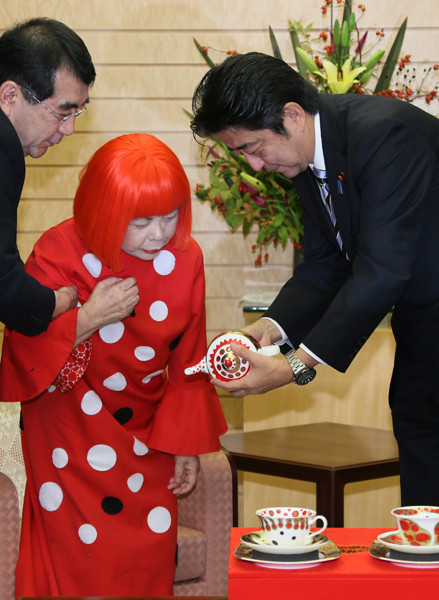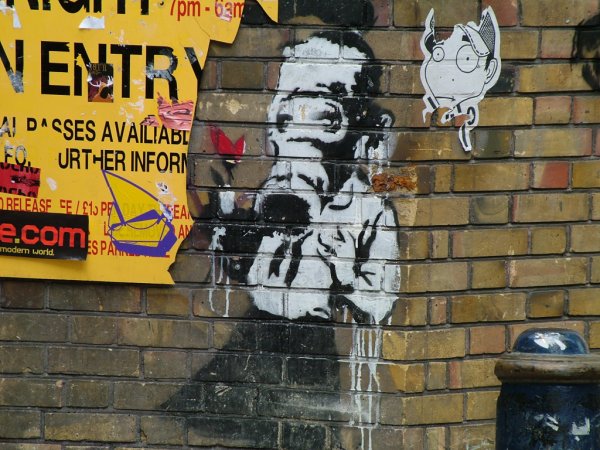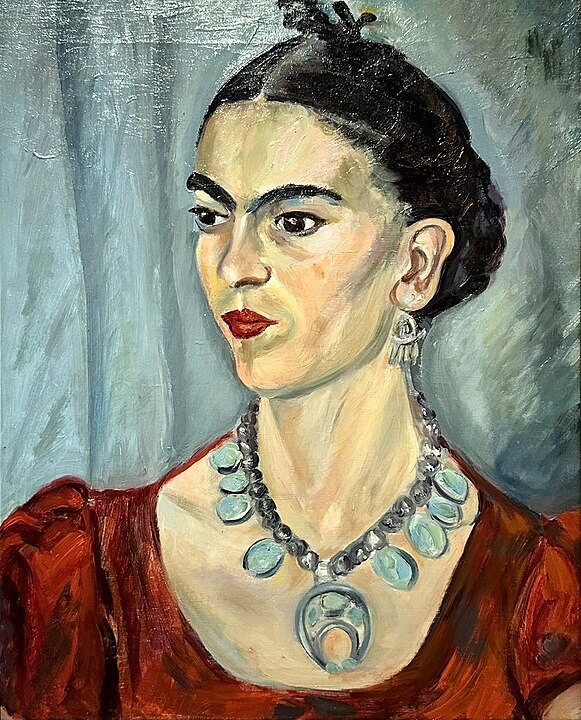The Beauty of Contemporary art is a captivating and ever-evolving form of artistic expression that holds immense beauty and significance in the modern world.
It encompasses a wide range of styles, techniques, and mediums that push the boundaries of traditional art forms. This introduction will explore the allure of contemporary art, its meaning and purpose, and the diversity it brings to the art world.
Key Takeaways:
- Contemporary art is a dynamic and diverse form of artistic expression
- It reflects the current cultural, social, and political climate
- Contemporary art allows artists to push the boundaries of their creativity
- It embraces diversity and celebrates a wide range of themes and concepts
- Contemporary art has evolved through various influences and key movements
What Is Contemporary Art?
Contemporary art, in its essence, is a powerful reflection of the current cultural context, responding to the ever-changing world we live in. Unlike traditional art forms, it goes beyond aesthetic beauty and delves into the complexities of our society, offering unique perspectives on the diverse issues that shape our lives. This vibrant and dynamic art movement embraces a wide range of mediums and styles, enabling artists to push the boundaries of their creativity and provoke thought in viewers.
Exploring the Diversity of Contemporary Art
Contemporary art embraces diversity in all its forms, celebrating the inclusion of artists from different backgrounds and exploring a wide range of themes and concepts. This inclusivity creates a vibrant tapestry of artistic expressions that challenge norms and break down barriers. From abstract paintings to immersive performance art, contemporary artists not only showcase their individuality but also foster unity through their creations.
"Contemporary art is a space where diversity thrives, allowing artists to express their unique perspectives and experiences. It opens the door to conversations about race, gender, sexuality, and social inequality, inviting viewers to engage with these important topics in a visually compelling way."
One of the defining characteristics of contemporary art is its freedom to explore a multitude of themes and concepts. Artists delve into personal and societal issues, shedding light on topics that are often overlooked. Some focus on environmental sustainability and climate change, using their artwork to spark conversations about our impact on the planet. Others address sociopolitical issues, shedding light on systemic inequalities and advocating for social justice.
In addition to themes, contemporary art allows for a diverse range of artistic expressions. Artists experiment with various mediums, techniques, and forms to push the boundaries of creativity. This can include traditional painting and sculpture, as well as installations, multimedia art, digital art, and performance art.
Traditional and Digital Mediums
Contemporary artists navigate a vast landscape of artistic expressions, blending traditional and digital mediums to create visually captivating artwork. They seamlessly integrate technology and digital tools into their creative processes, resulting in innovative and immersive experiences for viewers.
By merging traditional and digital mediums, contemporary artists challenge the conventional notions of art while embracing the endless possibilities offered by the digital age. This fusion of old and new creates a unique synergy that resonates with audiences and keeps contemporary art relevant in an ever-evolving world.
Inclusivity and Representation
In the world of contemporary art, diversity not only encompasses the artworks themselves but also the artists behind them. This includes artists from marginalized communities, whose voices and perspectives are often underrepresented in traditional art spaces.
"Contemporary art holds the power to celebrate the diverse stories and experiences of artists from all walks of life. It provides a platform for underrepresented voices, enabling them to share their narratives and challenge societal norms in a visually impactful way."
Contemporary artists continually push the boundaries of artistic expression, giving rise to new voices, perspectives, and artistic movements that reflect the ever-changing world we live in. Through their work, they inspire and provoke thought, leaving an indelible mark on the art world.
The Evolution Of Contemporary Art
Contemporary art has undergone a fascinating evolution, shaped by various origins, influences, and key movements. It emerged as a response to the changing world and the desire to create something new and innovative.
Influenced by movements such as Dadaism, Surrealism, and Abstract Expressionism, contemporary art embraced unconventional materials, techniques, and subject matter. Artists began to challenge traditional notions of art by incorporating found objects, experimenting with different media, and exploring abstract forms. This shift marked a significant departure from the more traditional art forms that dominated the previous centuries.
"Art should be something that liberates the soul, provokes the imagination, and encourages people to go further." - Keith Haring
One key movement that greatly influenced the evolution of contemporary art is Dadaism. Born out of the disillusionment and chaos of World War I, Dada artists sought to challenge and ridicule the established norms of art and society. They embraced absurdity, irrationality, and nihilism, using unconventional materials and techniques to create artworks that were meant to shock and provoke thought.
Another influential movement in the evolution of contemporary art is Surrealism. Led by artists such as Salvador Dalí and René Magritte, Surrealism aimed to explore the realm of the subconscious through dreamlike images and unexpected juxtapositions. This movement pushed the boundaries of artistic expression and opened up new possibilities for artists to explore the depths of the human psyche.
Abstract Expressionism is yet another key movement that had a profound impact on contemporary art. Artists like Jackson Pollock and Mark Rothko embraced abstraction and intuitive expression, emphasizing the emotions and feelings behind their artworks. They used bold brushstrokes, vibrant colors, and expansive canvases to create non-representational forms that embodied the energy and spirit of the post-war era.
Influential Contemporary Artists
The evolution of contemporary art would not be complete without recognizing the contributions of influential artists who have shaped the art world. Artists like Yoko Ono, Jeff Koons, and Cindy Sherman have pushed the boundaries of artistic expression and challenged conventional ideas of art, influencing generations of artists to come.
Yoko Ono, a pioneer in conceptual art, has used her work to advocate for peace and explore the boundaries of human interaction. Jeff Koons, known for his larger-than-life sculptures, blurs the lines between high and low culture, challenging notions of taste and value. Cindy Sherman, a master of self-portraiture, has used photography to question societal expectations of gender and identity.
The following table outlines some key movements in the evolution of contemporary art:
| Movement | Origins | Influential Artists |
|---|---|---|
| Dadaism | Zurich, Switzerland | Hugo Ball, Marcel Duchamp |
| Surrealism | Paris, France | Salvador Dalí, René Magritte |
| Abstract Expressionism | New York, United States | Jackson Pollock, Mark Rothko |
As contemporary art continues to evolve, artists will undoubtedly draw inspiration from these movements and forge new paths of creative expression. The rich history and diverse influences of contemporary art provide a fertile ground for artists to explore and challenge the boundaries of what is possible.
Contemporary Art In The Digital Age
With technological advancements, contemporary art has embraced new possibilities and expanded its horizons in the digital age. Artists now have access to a wide range of digital tools that allow them to explore innovative mediums and create immersive experiences for their viewers.
Digital art has emerged as a significant facet of contemporary art, encompassing various mediums such as:
- CGI: Computer-generated imagery (CGI) enables artists to craft stunning visual worlds and lifelike animations that push the boundaries of imagination and storytelling.
- VR: Virtual reality (VR) technology offers an entirely new dimension to art, blending the virtual and physical realms and immersing viewers in interactive and transformative experiences.
- Interactive Installations: Digital technology allows artists to create interactive installations that respond to the presence and actions of viewers, blurring the line between the artwork and its audience.
- Video Art: Artists are using video as a medium to explore complex narratives, perspectives, and emotions, creating visually captivating and thought-provoking experiences for viewers.
In addition to technological advancements, the digital age has brought about a democratization of the art world through online platforms and social media. Artists now have the opportunity to share their work with a global audience instantly, bypassing traditional gatekeepers and establishing direct connections with art enthusiasts and collectors.
Online galleries and digital exhibitions have revolutionized the accessibility of contemporary art by breaking down geographic barriers and allowing viewers to explore diverse artworks from the comfort of their own homes. This increased accessibility has paved the way for emerging artists to gain recognition and for new voices and perspectives to be celebrated in the art world.
"The digital age has transformed the art landscape, providing artists with unprecedented tools and platforms to express their creativity and connect with viewers around the world." - [Artist Name]
| Advancements | Opportunities |
|---|---|
| Technological advancements | Creation of immersive digital artworks |
| Democratization of the art world | Access to a global audience |
| Online galleries and digital exhibitions | Increased accessibility and reach |
The Impact Of Contemporary Artists
Contemporary artists have played a vital role in shaping and influencing the art world, bringing their unique perspectives and creative expressions to the forefront. Three artists who have made a significant impact are Yayoi Kusama, Banksy, and Frida Kahlo.
Yayoi Kusama: A Visionary Artist
Yayoi Kusama, a Japanese contemporary artist, is renowned for her innovative and boundary-pushing artwork. Her mesmerizing installations and vibrant polka dot motifs have captivated audiences worldwide. Kusama's art explores themes of infinity, consciousness, and the obliteration of self. Through her visionary creations, she invites viewers to contemplate the vastness of the universe and their place within it.

Banksy: Provoking Thought through Street Art
Banksy, an anonymous street artist, has gained international recognition for his thought-provoking and politically-charged artwork. From his iconic stencil graffiti to his outdoor installations, Banksy uses public spaces as a canvas to challenge societal norms, question authority, and spark conversations. With his bold messages and visually striking imagery, Banksy pushes the boundaries of traditional art and challenges the status quo.

Frida Kahlo: Symbolic Self-Portraits and Empowering Feminism
Frida Kahlo, a Mexican artist, is celebrated for her expressive self-portraits and powerful representation of female experiences. Through her symbolic use of vivid colors and intricate details, Kahlo conveyed her physical and emotional pain, as well as her deep connection to Mexican culture and heritage. Her art not only expressed personal struggles but also became a powerful voice for feminism and individuality.
"Every artist dips his brush in his own soul, and paints his own nature into his pictures." - Frida Kahlo

These contemporary artists, Yayoi Kusama, Banksy, and Frida Kahlo, have undoubtedly left a lasting impact on the art world. Through their unique visions, bold expressions, and unapologetic voices, they have contributed to the diversity and beauty of contemporary art.
Exploring Contemporary Art Techniques
Contemporary artists employ various techniques to bring their artworks to life. One popular technique is mixed media, which involves combining different materials and mediums to create visually captivating artwork. Notable artists like Robert Rauschenberg and Wangechi Mutu have incorporated everyday objects and diverse materials into their works, adding layers of meaning and challenging traditional notions of art.
Abstract expressionism is another prominent technique in contemporary art. It is characterized by bold brushstrokes and vibrant colors that allow artists like Jackson Pollock and Julie Mehretu to express their emotions and ideas through non-representational forms. This artistic style encourages personal interpretation and evokes powerful emotions from viewers.
"Contemporary art techniques like mixed media and abstract expressionism allow artists to push the boundaries of creativity and challenge traditional notions of art. They offer a unique visual language for expressing emotions, ideas, and diverse perspectives."
These contemporary art techniques provide artists with the freedom to explore new artistic possibilities and push the boundaries of creativity. Through mixed media and abstract expressionism, artists create captivating and thought-provoking works that reflect the spirit of contemporary art.
| Contemporary Art Technique | Description | Notable Artists |
|---|---|---|
| Mixed Media | A technique that combines different materials and mediums to create visually captivating artwork | Robert Rauschenberg, Wangechi Mutu |
| Abstract Expressionism | A style characterized by bold brushstrokes and vibrant colors, allowing artists to express emotions and ideas through non-representational forms | Jackson Pollock, Julie Mehretu |
Installations And Performance Art
In the realm of contemporary art, installations and performance art offer immersive experiences that engage with space, time, and audience participation. These forms of artistic expression go beyond traditional mediums to create interactive and thought-provoking encounters with art.
Contemporary art installations involve the deliberate arrangement of objects or materials in a specific environment to create a sensory and immersive experience for viewers. These installations can be found in galleries, museums, and outdoor spaces, transforming the way art is experienced. One notable artist known for her immersive installations is Yayoi Kusama. Her Infinity Rooms transport viewers into mesmerizing worlds that explore themes of infinity and self-obliteration.
"My art originates from hallucinations only I can see." - Yayoi Kusama
Performance art, on the other hand, blurs the line between art and life and is characterized by live actions and interactions. Artists like Marina Abramović are known for pushing physical and emotional boundaries through their performances. Abramović's work often challenges the endurance and vulnerability of the artist and the viewer, creating powerful and transformative experiences.
These forms of contemporary art invite viewers to engage, reflect, and interact with the artwork on a deeper level. By immersing themselves in the installation or participating in a performance, viewers become active participants, shaping the narrative and experiencing art in a highly personal and memorable way.
Installations and Performance Art: A Comparison
| Aspect | Installations | Performance Art |
|---|---|---|
| Medium | Objects and materials arranged in a specific environment | Live actions and interactions |
| Engagement | Visual and sensory immersion | Physical and emotional involvement |
| Duration | Long-term or temporary | Live and ephemeral |
| Space | Physical environment and spatial arrangement | Action within a space or a specific location |
| Participation | Passive observation and exploration | Active engagement and interaction |
Conclusion
Contemporary art is a dynamic and diverse form of artistic expression that beautifully reflects the current cultural, social, and political climate. It has evolved from its origins in the mid-20th century to become a thriving presence in the digital age, constantly challenging conventional ideas and pushing boundaries.
One of the remarkable aspects of contemporary art is its ability to offer unique perspectives on the world. Artists from around the globe use their creativity and innovation to create thought-provoking works that captivate viewers. The diversity of themes and artistic expressions within contemporary art showcases the rich tapestry of human experiences and challenges traditional norms.
The impact of contemporary artists like Yayoi Kusama, Banksy, and Frida Kahlo cannot be understated. They have made significant contributions to the contemporary art scene, leaving an indelible mark on the art world. Their works embody the beauty and evolution of contemporary art, adding depth and meaning to its diverse expressions.
Contemporary art, with its varied techniques, installations, and performance art, offers immersive experiences that engage and provoke thought in viewers. It continues to break new ground and redefine artistic expression. As we embrace the beauty and evolution of contemporary art, we recognize its power to inspire, challenge, and foster dialogue in our ever-changing world.
FAQ
What is contemporary art?
Contemporary art is a captivating and ever-evolving form of artistic expression that encompasses a wide range of styles, techniques, and mediums that push the boundaries of traditional art forms. It reflects the current cultural, social, and political climate, offering unique perspectives on various issues that shape society.
How does contemporary art celebrate diversity?
Contemporary art celebrates diversity in all forms, including diverse artists from different backgrounds and artworks that explore a wide range of themes and concepts. This inclusivity allows for a rich tapestry of artistic expressions that challenge norms and break down barriers.
How has contemporary art evolved over time?
Contemporary art has undergone a fascinating evolution, shaped by various origins, influences, and key movements. It emerged as a response to the changing world and the desire to create something new and innovative. Influenced by movements such as Dadaism, Surrealism, and Abstract Expressionism, contemporary art embraced unconventional materials, techniques, and subject matter.
How has technology impacted contemporary art?
With technological advancements, contemporary art has found new avenues for exploration in the digital age. Artists now have access to various digital tools to create immersive experiences for viewers. Digital art encompasses mediums such as CGI, virtual reality, interactive installations, and video art. Social media platforms have also democratized the art world, allowing artists to share their work with a global audience instantly.
Who are some influential contemporary artists?
Contemporary artists like Yayoi Kusama, Banksy, and Frida Kahlo have made a significant impact on the art world. Yayoi Kusama is known for her unique and visionary art, Banksy for his bold and thought-provoking artwork, and Frida Kahlo for her powerful emotions and challenging of societal norms through symbolic self-portraits.
What techniques do contemporary artists use?
Contemporary artists use various techniques to create their artworks. Mixed media, which combines different materials and mediums, is a popular technique that adds layers of meaning and challenges traditional notions of art. Abstract expressionism, characterized by bold brushstrokes and vibrant colors, allows artists to express emotions and ideas through non-representational forms.
How do contemporary art installations and performance art engage viewers?
Contemporary art installations involve the arrangement of objects or materials in a specific environment to create immersive experiences. Performance art challenges physical and emotional boundaries and often blurs the line between art and life. These forms of contemporary art invite viewers to engage, reflect, and interact with the artwork.
